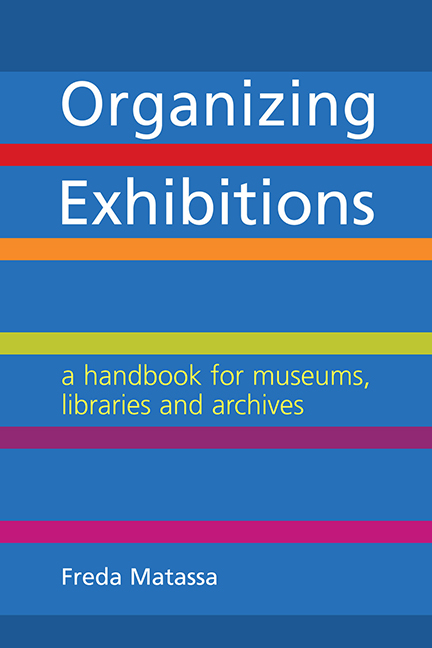9 - Touring exhibitions
Published online by Cambridge University Press: 10 September 2022
Summary
Fundamentals
Only a small proportion of exhibitions go on tour but if the exhibition is suitable to send to another venue, touring can be a positive experience for all concerned. If an exhibition is going to travel, there must be a high level of cooperation between the organizer and the borrower. There is more to touring than sharing costs: touring is a partnership and should bring shared responsibilities as well as shared benefits. The receiving venue should have suitable facilities and be capabile of managing the exhibition to the required standard.
A good relationship should be established with the other organizations and frequent contact is essential. Communication is particularly important once the exhibition has moved on from your control. Make sure all the arrangements are worked out well before the tour starts and that venues have all the information and support they need. Written agreements are essential to cover all eventualities. Keep monitoring the exhibition while it is on tour and be able to react quickly to new developments. Make sure that information and materials are gathered at the end, copied for each participating venue, and placed in the archive.
Why send an exhibition on tour?
The possibility of touring an exhibition can be considered from the idea stage and factored in from the start. This will ensure that the design can be adapted to different spaces and can withstand a tour. The decision to tour, however, should be carefully considered. It may be tempting to gain a hire fee or share costs but touring should be about more than finance.
There are many reasons for sending cultural items on tour. Some organizations choose to send part of their collection on tour in order to gain wider audiences. A collection may travel when the organization is closed for refurbishment. For example, The Museum of Fine Arts, Antwerp, and the Rijksmuseum, Amsterdam, both sent exhibitions from their collections on a national tour when closed for renovations. Items may also be sent on international tours, such as an exhibition from Kenwood House, London, which was sent to three venues in the USA, raising income for major repairs.
Sometimes touring is a condition made by a grant-awarding body. They may wish their funding to have greater benefit by creating more exposure.
- Type
- Chapter
- Information
- Organizing ExhibitionsA Handbook for Museums, Libraries and Archives, pp. 189 - 210Publisher: FacetPrint publication year: 2015



